Quarterly report (Jan-March 2020) on anonymous sources
South Asia Check / April 15, 2020
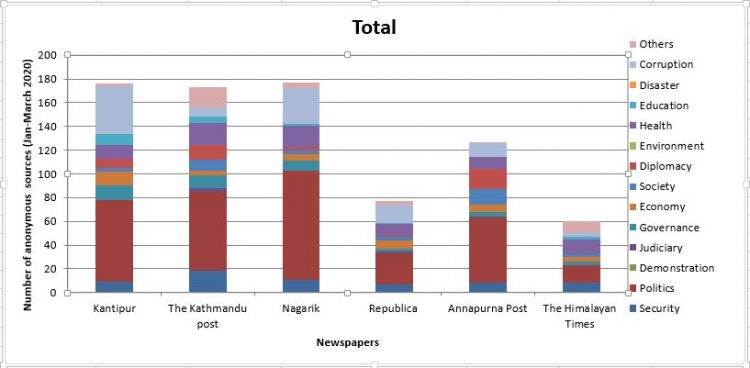
During the three months between January 1 and March 31, 2020, among the six major national dailies that we monitor, Nagarik used the most number of anonymous sources in the front page reports. It used a total of 177 anonymous sources in the front page reports during the period.
South Asia Check tracks the use of anonymous sources in the news reports published on the front pages of six leading national dailies of Nepal – Kantipur, Nagarik, Annapurna Post, The Kathmandu Post, Republica and The Himalayan Times. While the first three are Nepali language newspapers, the last three publish in English.
After Nagarik, the dailies using the most number of anonymous sources included Kantipur, The Kathmandu Post, Annapurna Post and Republica respectively. The Himalayan Times used the least number of anonymous sources during the period. In the three months, it used 60 anonymous sources.
During the three months, the front page reports of the six dailies used altogether 790 anonymous sources.
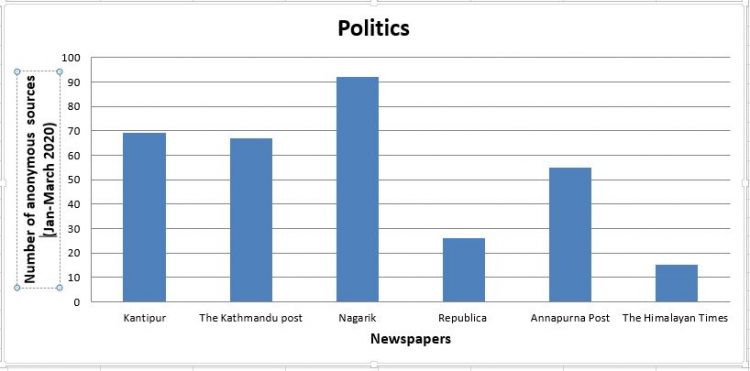
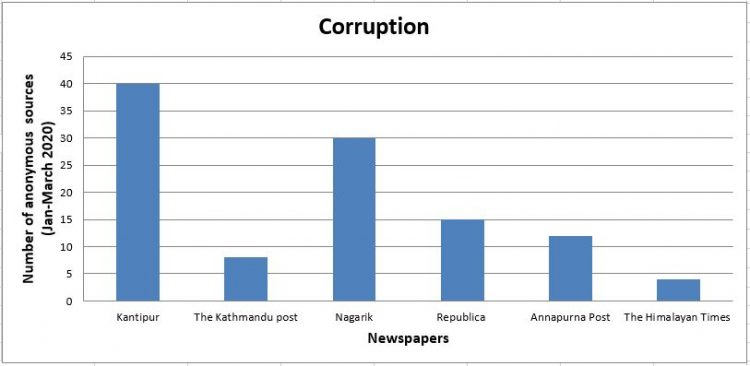

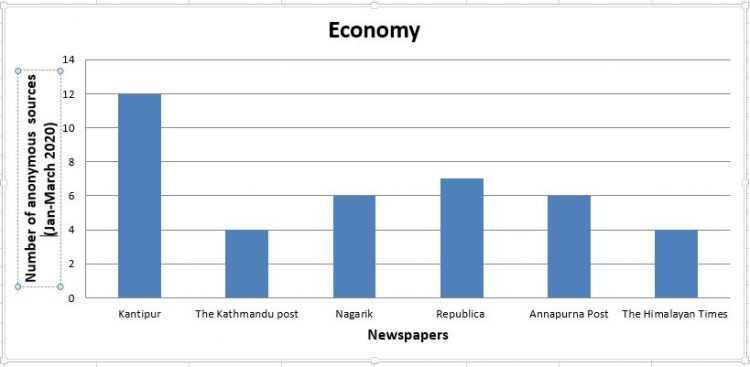
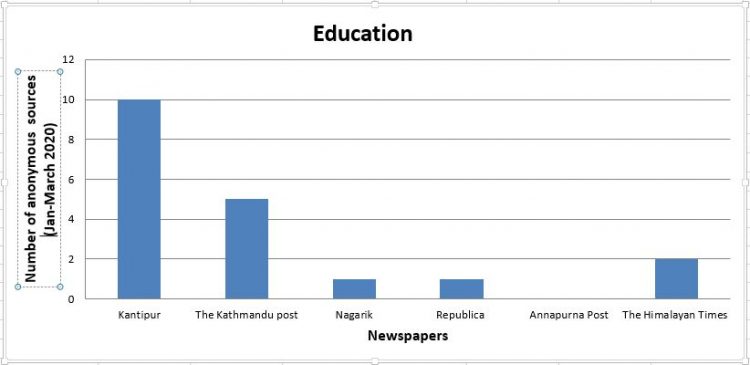
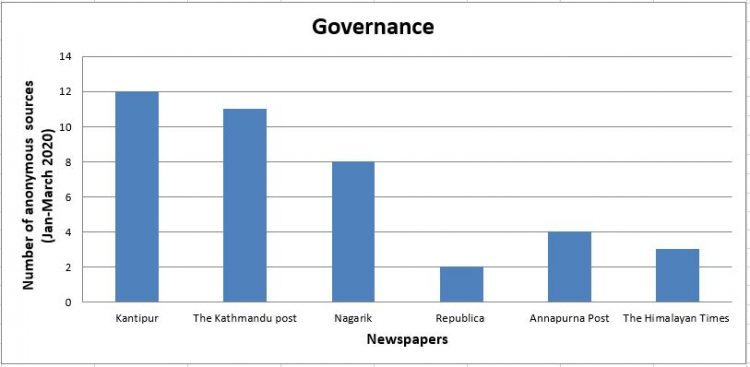
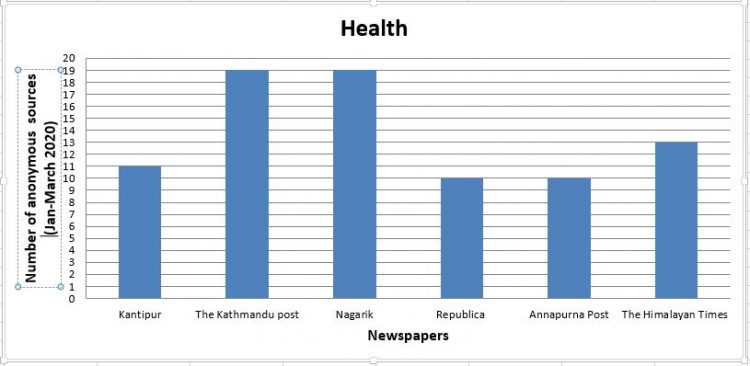
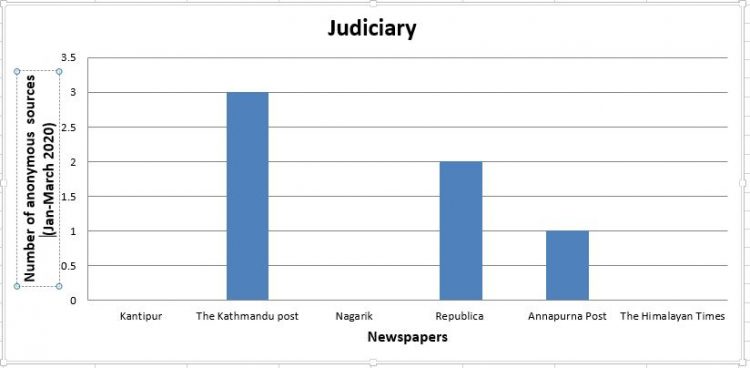
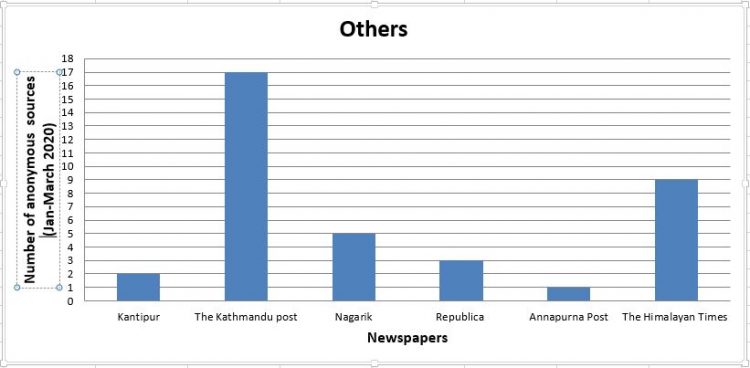
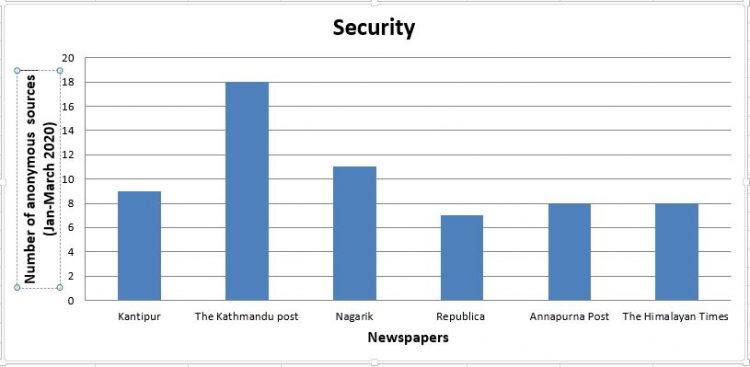
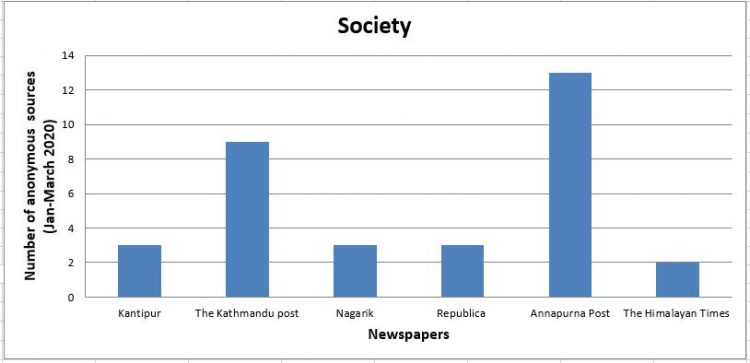
Most of the news reports on the front pages of the newspapers were on politics. Anonymous sources were mostly used in politics-related news reports (in 324 instances) during the period. Nagarik and Kantipur were the first and second national dailies respectively using the highest numbers of anonymous sources in their news reports related to politics; Nagarik used anonymous sources in 92 instances and Kantipur in 69 instances in such reports.
Corruption is the second topic in the Nepali newspapers where anonymous sources are used in highest numbers. During this period, anonymous sources were used in 109 instances in corruption-related news reports in the six newspapers. Kantipur used the highest number of anonymous sources (40) in corruption-related news reports.
Quoting anonymous sources in news reports is normal. Regarding the use of anonymous sources in news reports, ‘Journalist’s Code of Conduct, 2016 (first amendment 2019)’ issued by the Nepal Press Council states the following:
“Source should be quoted for the reliability of the news. However, while quoting the source, the name and identity of such source should be kept confidential so as to avoid any serious damage to the source.”
The identity of news source should be protected only if revealing the source’s identity can cause serious harm to him/her.
But some news reports published during this period have quoted anonymous sources even when there is no apparent need to do so.
For example, a story headlined “Will coronavirus bring common purpose to a faltering SAARC” published in an English-language daily stated the following:
Some Senior Indian diplomats have said in public in the recent past that ‘SAARC has outlived its utility’ or that ‘SAARC is already dead’
Another story titled “More women are in politics, but those at decision level are few and far between” in an English-language daily states:
“The appointments, the reshuffle has not been on a merit basis. As much as I agree to merit in every aspect, the co-chairs’ cannot fool its citizens saying ‘we cannot find qualified women parliamentarians to be ministers’, sorry [sic],” wrote one user on social media, pointing out the lopsided gender ratio.
Similarly, in another story titled “Head-on collision of passenger vehicles leaves five dead”, an English-language daily states:
According to a relative of an injured passenger, both the vehicles were travelling in high speed when the accident occurred.
Haphazard use of anonymous sources diminishes the credibility of news reports and the newspapers publishing such reports.
Click here to download the spreadsheet of anonymous sources statistics prepared by South Asia Check.
Note: The Kathmandu Post and Kantipur stopped printing from March 28, 2020 citing the coronavirus pandemic. They resumed publication after a few days.]
This material is copyrighted but may be used for any purpose by giving due credit to southasiacheck.org.
Comments
Latest Stories
- In Public Interest Covid-19 cases are low, but that’s not an excuse to avoid vaccination
- In Public Interest What is BF.7, the sub-variant that has the world by its grip?
- In Public Interest Threat of a new Covid-19 wave looms large amid vaccine shortage in Nepal
- In Public Interest As cases decline, Covid-19 test centres in Kathmandu are desolate lot
- In Public Interest Dengue test fee disparity has patients wondering if they’re being cheated
- In Public Interest As dengue rages on, confusion galore about what it is and what its symptoms are. Here’s what you need to know
In Public Interest
 Covid-19 cases are low, but that’s not an excuse to avoid vaccination
The Pfizer-BioNTech bivalent vaccines authorised by the Nepal Government provide better protection a...
Read More
Covid-19 cases are low, but that’s not an excuse to avoid vaccination
The Pfizer-BioNTech bivalent vaccines authorised by the Nepal Government provide better protection a...
Read More
- What is BF.7, the sub-variant that has the world by its grip?
- Threat of a new Covid-19 wave looms large amid vaccine shortage in Nepal
- As cases decline, Covid-19 test centres in Kathmandu are desolate lot
- Dengue test fee disparity has patients wondering if they’re being cheated
- As dengue rages on, confusion galore about what it is and what its symptoms are. Here’s what you need to know